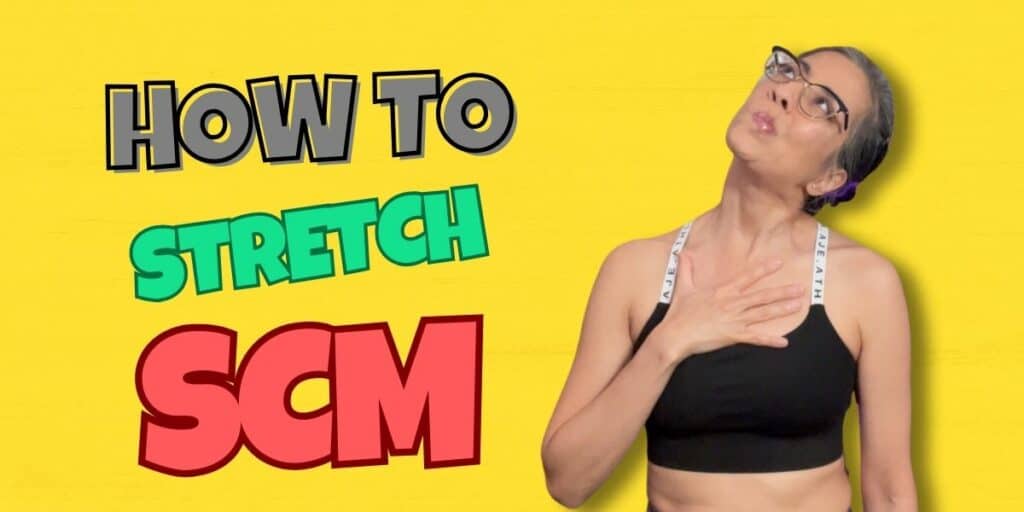This is Part 3 of the Body-Voice Connection Mini Series.
Like This Post?
Never miss a post.
Get our blog posts delivered straight to your inbox!
In this episode of MoveMedics TV, I’ll breakdown the optimal position for singing and voice use and what specific Elements of Movement are required to achieve this.
I also share the 2 fold process to integrating your Voice, Breath, and Body to support your Vocal Health and Performance.
’Til next time, Be Free In Your Movement™.
x
Selina
B. Phty
This information is not medical advice. Got health concerns? Consult a real-life health professional.
Views are my own.
*Affiliate links. Your choosing to use these goes towards supporting my content creation. Thank you.
This is part three of the Body-Voice Connection mini-series and today we are talking about the Body. What is the ideal position for voice use? And what specific Elements of Movements do you need to achieve this position? And how can you integrate your Voice, your Breath and your Body to support your vocal health and performance?
Ready? Let’s jump in.
Hi, I’m Selina, physio from MoveMedics, welcome to my channel. I help people improve their mobility for fun and function, with special interest in doing the splits, backbend, and singing. If these sounds good to you please subscribe to my channel and make sure you ding that notification bell so you don’t miss my new videos when they come out.
Now you know that the fitter, healthier, stronger you are, the easier it is for you to do most things. You can carry your groceries easier, you can go up and down stairs easier, and you can also use your voice easier.
This is probably easier to demonstrate when we think about the opposite, when we don’t have the physical conditioning. We have all been so exhausted that we don’t want to talk anymore, and we’ve all been so sick and stuck in bed that we can barely manage a meh as a response, and you may also have visited someone in the hospital where they are very sick, weak, and frail and they struggle to speak, and it can be so severe that they struggle – to – speak – a – sentence. Right?
So on a general sense, the fitter, stronger, healthier you are, the better your physical conditioning is, the easier and better you can use your voice.
In terms of supporting your vocal health and performance, we want to be more specific, and I encourage you to improve your Movement Capacity.
Movement Capacity is a term I use to describe your overall ability to move and it has nine elements. Now I have a playlist where I break down each of these elements in turn in details and I highly encourage you to check that out, but essentially when you have high levels across all nine elements, you have high Movement Capacity, when you have high Movement Capacity, the movement that you want to do naturally becomes available to you.
For singers and voice users the movement you want to be easily able to do is to assume the ideal voicing position, which is a relaxed upright position. This position is ideal because your larynx is in a neutral position, your breath coming up from your lungs comes up in one straight smooth column of air, and it is also a friendly position for your core, your diaphragm, and your pelvic floor to work.
When you deviate away from this position your voice would just change. Check this out.
See! That’s quite fun, you should give that a go, too.
In order to assume this relaxed upright position I want to draw your attention to three particular Elements of Movement, mobility, strength, and proprioception.
In terms of mobility, do you have the mobility in your spine to easily come up into the upright position or perhaps you may be a little bit restricted in your thoracic spine that makes that difficult? And what options of movement do you have in your upper cervical spine, where your head joins to your neck? Do you have enough upper cervical flexion to let you come into a neutral head position or perhaps you might be a bit stuck in upper cervical extension? And notice how my voice has changed. Also, what about your ribcage mobility? Do you have good mobility in your rib cage to let you breathe efficiently?
In terms of strength, do you have the strength in your back to stay upright for as long as you need or do you fatigue after a while and you keep slumping down?
And for proprioception, which is your joint position sense, do you have the brain-body awareness and connection to know where you are? And when you want to make adjustment, are you really adjusting what you think you are doing or are you doing something else?
Now these questions are simply scratching the surface when we talk about Movement Capacity, the takeaway here is to know that everyone’s Movement Capacity profile is different, the key is to know what you lack and you build up those ones. If it is proprioception that you lack, it doesn’t matter how strong you get, it won’t change a thing.
Once you have decent Movement Capacity you can start thinking about integrating your voice, your breath, and your body.
Now your body is one complex and incredible ecosystem, there are many parts, each part has their primary role and each part also work with many other parts, and because of this interconnectedness it means that when one part has a deficiency, it often can borrow from another part. Like I mentioned last week you can use your neck to help you breathe, and you can also use your breath to help you lift.
And it is very common that when you have a deficiency, a chronic deficiency in one part of your body, that the parts that it goes to borrow help from eventually also start to become deficient, and you end up in this downward spiral.
For example, we know that for people who have chronic back pain, they are also far more likely to also have poor diaphragm strength and endurance.
And of all the women I have ever worked with who have chronic back pain, the majority of them also have one or more of a chronic respiratory condition, or a chronic pelvic health condition ranging from painful, difficult period, to endometriosis, to stress incontinence, or some kind of postpartum issues.
From my perspective as a physio, when I put all these together I believe to effectively integrate your voice, your breath, and your body that it is a twofold process.
Firstly you want to train each of these components separately, you want to work with your vocal coach to develop your technique so you can use your voice well, you want to be doing regular huff and puff exercises so you can breathe well too, and you also want to strive to keep improving your Movement Capacity so your body become better and better able to support itself, and to support your breathing and your voice use.
Essentially you want each of these three components to be as awesome as they can be so they bring the A-game when they come together for your voice use.
The second part is of course then to train them all together and you do that by doing movement that specifically target the myofascial structures involved in your voice, which goes from your head to your toes, and you also want to be incorporating breath work and voicing with these movement.
Now for me this is where passion and career happily collide and I will be sharing more content going forward, which includes an online integrated movement programme for singers that you can access anytime, anywhere.
If you want to be the first to find out when they are ready, make sure you’re part of the MoveMedics family and you can join the fam using this link and I will also put the link in the description box so you can click it and head straight over to my website.
In the meantime if you have any questions about today’s episode, please leave me a comment and I will do my best to help you out.
I want to invite you to come hang out with me over at the Instamagram where I share bite-size movement and mindset tips.
I want to thank you very much for hanging out with me today, I appreciate your lots and I look forward to seeing you in the next episode.
And until then, thank you so much for watching and Be Free In Your Movement™







